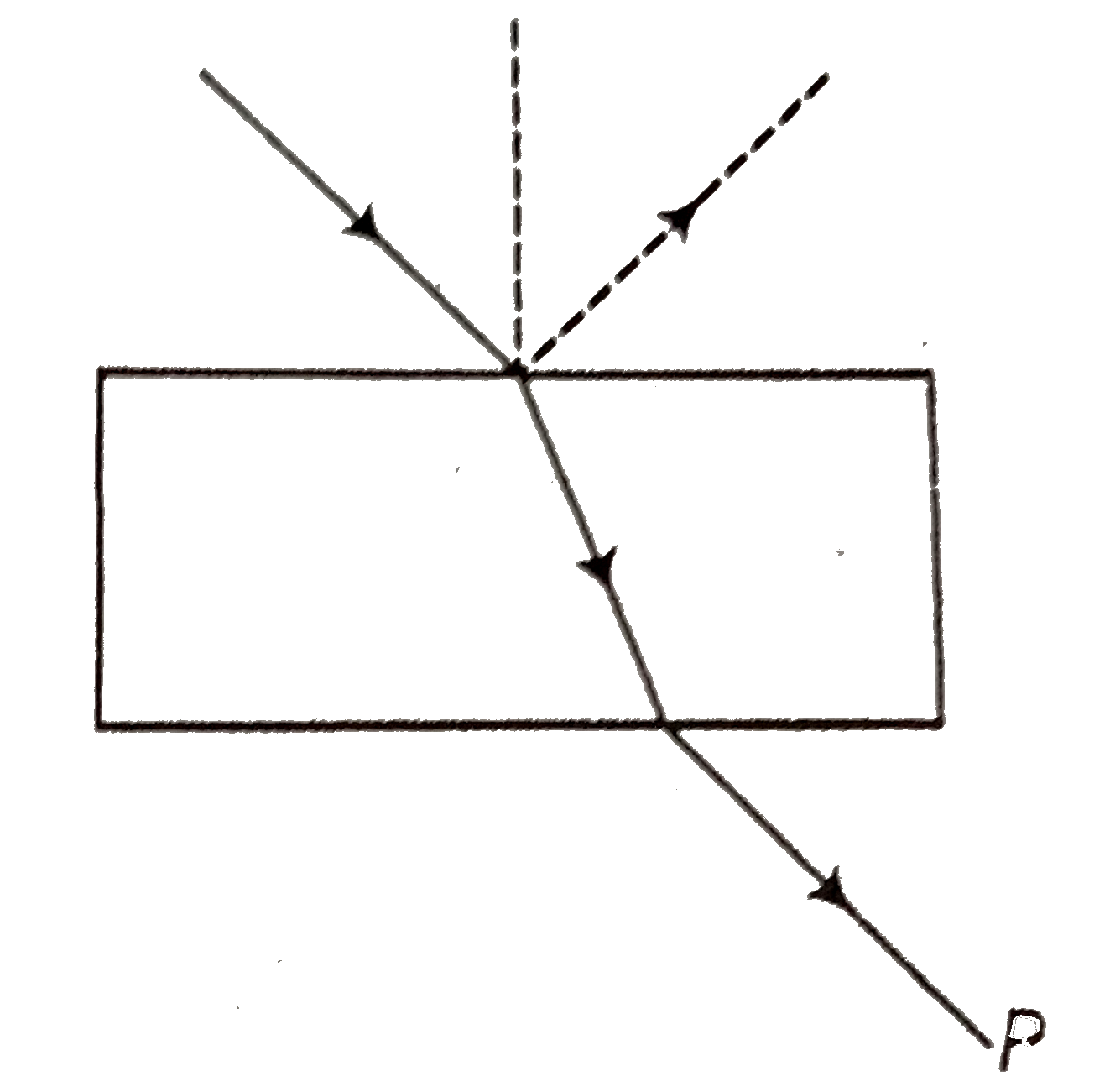A beam of light AO is incident on a glass slab (μ=1.54) in a direction as shown in the diagram The reflected ray OB is passed through a polaroid On viewing through the polaroid. We find that on rotating the polaroid (given tan57∘=1.54)

the intensity is reduced down to zero and remains zero
The intensity reduces down some what and rises again
There is no charge in intensity
The intensity gradually reduces to zero and then again increases
The correct Answer is:D
Step by step video & image solution for A beam of light AO is incident on a glass slab (mu=1.54) in a direction as shown in the diagram The reflected ray OB is passed through a polaroid On viewing through the polaroid. We find that on rotating the polaroid (given tan 57^@=1.54) by Physics experts to help you in doubts & scoring excellent marks in Class 12 exams.
Updated on:21/07/2023Similar Questions
A beam of light is incident on a glass slab (μ=1.54) in a direction as shown in the figure. The reflected light is analysed by a polaroid prism. On rotating the polaroid, (tan57∘=1.54)
(##DPP_PHY_CP24_E01_002_Q01.png" width="80%">
View SolutionA beam of light incident on a glass slab (μ=1.54) in a direction as shown in the figure. The reflected light is analysed by a polarioid prism, On rotating the polariod, (tan57∘=1.54)

View SolutionPlane polarised light is passed through a polaroid. On viewing through the polaroid we find that when the polaroid is given one complete rotation about the direction of light
View SolutionA plane polarised light is passed through a polaroid, when the polaroid is given one full rotation about the direction of light, then
View SolutionA ray of light passing through the point (1, 2) reflects on the x–axis at point A and the reflected ray passes through the point (5, 3). Find the coordinates of A.
View SolutionConsider a light beam incident from air to a glass slab at Brewster's angle as shown in figure.
A polaroid is placed in the path of the emergent ray at point P and rotated about an axis passing through the centre and pependicular to the plane of the polaroid.

View Solution(a) How does one demonstrate, using a suitable diagram, that unpolarised light when passed through a Polaroid gets polarised?
(b) A beam of unpolarised light is incident a glass-air interface. Show using a suitable ray diagram, that light reflected from the interface is totally polarised, when μ=taniB, when μ is the refractive index of glass with respect to air and iB, is the Brewster's angle.
View SolutionA ray of light passing through the point (1,2) reflects on the x-a xi s at point A and the reflected ray passes through the point (5,3) . Find the co-ordinates of A.
View SolutionA ray of light is incident on a surface in a direction given by vector A=2i−2j+k. The normal to that surface passing through the point of incidence is along the vector N=j−2k. The unit vector in the direction of reflected ray is given by R=aj+bj+ck. Find three equations in terms of a,b,c using which we can find the values of a,b,&c
View SolutionConsider a light beam incident from air to a glass slab at Brewster's angle as shown in figure.
A polaroid is placed in the path of the emergent ray at point P and rotated about an axis passing through the centre and pependicular to the plane of the plaroid.

View Solution
